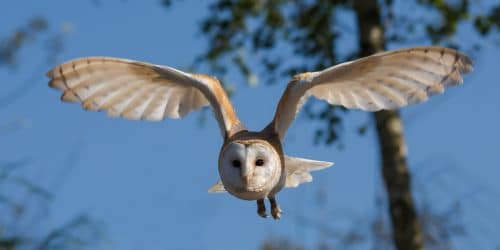Like the silent flight of The owl, the quiet aviation of breathing engages the research world as a basis for developing quiet solutions for dynamic systems such as aircraft, trains, and wind turbines.

By: Dafna Haim-Langford
Another study reveals how inspiration from airfoils allows aircraft and wind turbines to be quieter.
Researchers from Japan and China studied the serrated structure in the wings of a bird and came to new insights into how a serrated structure works to silence the bird's flight.
The results of their research were published in the journal Bioinspiration & Biomimetic as an example of a potential mechanism for noise suppression in wind turbines, aircraft, multi-engine drones and other machines.
Prof. Liu from Chiba University in Japan, who led the research, claims that ospreys are known for their quiet flight due to unique features, such as the serrations on the front wing tips, tufts on the rear wing tips and a velvet-like surface between them. In their study, the researchers examined whether and how these features affect the effectiveness of aviation and its volume.
The research was carried out through the flight simulation of various structures inspired by a rebreather wing in conditions simulating a wind tunnel. From the results of the simulations it appears that the memorization at the front end of the wing has a critical meaning for the aerodynamic force as well as for the quietness of the flight itself. It was also found that there is a relationship between the aerodynamic force and maximum suppression of the sound volume in flight with an optimum point at a specific wing angle.
Memorizing wind turbine blades, aircraft wings or drone engines inspired by a rebreather wing, can enable biomimetic design for flow and noise control. Today, when the issue of noise pollution constitutes one of the barriers to the use of wind turbines as a source of clean renewable energy, this application has implications for the entire field.

3 תגובות
Mr. Haim Sh
I participated in scientific meetings ("forums") outside Israel and spoke English,
I was at scientific meetings ("forums") in Israel and I spoke Hebrew,
I studied abroad in English and in Israel in Hebrew,
I wrote and published scientific papers in Israel in Hebrew and abroad in English,
The site where the news is written is published in the Land of Israel where Hebrew is spoken and read,
The news is written in Hebrew, the readers of the news do so in the Hebrew language,
Many of the scientific concepts in Lez have words in Hebrew,
That is why, if possible, it is appropriate not to pronounce in Laz...
Mr. Gatekeeper
Hebrew is a beautiful language, but it is suitable for poetry, love, literature, etc. But it is not suitable for science.
The scientific language in the world is English (and Greek) with all its derivatives. The fact that scientific words have a Hebrew meaning does not make Hebrew the language of science. There is no doubt that when you arrive at a scientific forum, you will speak English. In Hebrew they won't understand you even if you use the most translated words, the most beautiful and the most washed up there is.
The writing is interesting though
Why not write in clean Hebrew?
"Turbulence" = confusion. "effectiveness" = efficiency, "simulation" = simulation,
And so on, when there are good, accurate and correct concepts in Hebrew
There is no reason to use leaz.